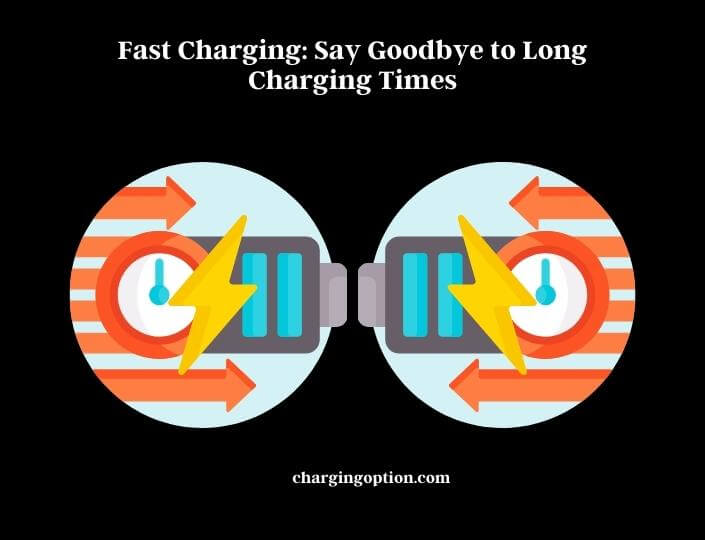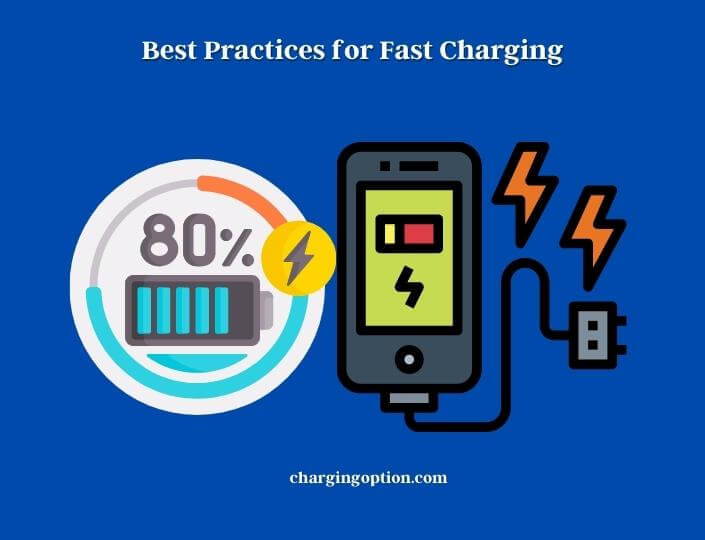Fast charging technology has become an essential part of our daily lives, especially for smartphone users who are always on the go. As our reliance on mobile devices increases, the need for efficient and fast charging solutions has become crucial. Fast charging is a technology that allows your device to charge quickly, saving you valuable time and giving you the convenience of not having to worry about running out of battery.

In today’s world, where time is of the essence, the importance of fast charging cannot be overstated. Whether you are a student, a professional, or someone who relies heavily on your phone throughout the day, fast charging can help you stay connected and productive without worrying about battery life.
What is Fast Charging?
Fast charging is a technology that allows your mobile devices, such as a smartphone or tablets, to charge at a faster rate than traditional charging methods. It is designed to deliver higher power to the device’s battery, allowing it to charge at a much faster rate than a standard charger.
Fast charging technology has become increasingly popular over the years due to its ability to quickly charge devices, which saves users valuable time.
There are several different types of fast charging standards available in the market, such as Quick Charge, Power Delivery, and others. These standards differ in terms of the technology used, the maximum power they can deliver, and the compatibility with different devices.
Types of Fast Charging Standards
There are several types of fast charging standards available in the market, each with its unique technology and capabilities. Here are some of the most popular fast-charging standards:
Quick Charge
Quick Charge is a fast charging technology developed by Qualcomm, which is widely used in Android devices. This technology delivers higher power to the device’s battery, allowing it to charge up to four times faster than a standard charger. Quick Charge is backward compatible, meaning it works with older devices that don’t support the technology.
Power Delivery
Power Delivery is a fast charging technology developed by the USB Implementers Forum (USB-IF), which allows for high-speed charging through a USB-C port. This technology provides higher power and faster charging than Quick Charge and is designed to be more efficient and safer than traditional charging methods.
SuperVOOC
SuperVOOC is a fast charging technology developed by Oppo, which is capable of charging a 4,000mAh battery in just 30 minutes. This technology uses a specialized charger and cable to deliver high power to the device’s battery, allowing for extremely fast charging.
Warp Charge
Warp Charge is a fast charging technology developed by OnePlus, which is capable of charging a 4,000mAh battery in just 20 minutes. This technology uses a specialized charger and cable to deliver high power to the device’s battery, allowing for extremely fast charging.
Adaptive Fast Charging
Adaptive Fast Charging is a fast charging technology developed by Samsung, which is capable of charging a device up to 50% in just 30 minutes. This technology is designed to be backward compatible, meaning it works with older devices that don’t support the technology.
How Does Fast Charging Work?
Fast charging technology works by increasing the power delivered to the device’s battery during the charging process. A typical charger delivers power to the device’s battery at a standard rate of 5 volts and 1 amp, which means it delivers 5 watts of power.
Fast chargers can deliver higher voltages and amperages to the device’s battery, which allows it to charge at a much faster rate.

Fast charging technology uses a combination of specialized chargers, cables, and software algorithms to deliver high power to the device’s battery. When a device is connected to a fast charger, the charger, and the device communicate to determine the maximum power that the device can handle.
Once the charger and device have established the maximum power, the charger delivers power to the device’s battery at a higher voltage and amperage than a standard charger.
For example, Quick Charge technology delivers up to 18 watts of power, which is four times faster than a standard charger. Power Delivery technology can deliver up to 100 watts of power, making it one of the fastest charging technologies available.
It is important to note that not all devices support fast charging technology, and not all fast chargers are compatible with all devices. Users should check the compatibility of their device with the different fast charging standards to determine which one is best suited for their needs.
Benefits of Fast Charging
Saves Time
Fast charging technology allows users to charge their devices quickly, which saves valuable time. Users no longer have to wait for hours for their devices to fully charge.
Increased Productivity
With fast charging, users can stay connected and productive without worrying about running out of battery. This is especially important for professionals who rely heavily on their devices for work.
Convenience
Fast charging technology provides users with the convenience of not having to carry around a charger or worry about running out of battery while on the go.
Compatibility
Fast charging technology is backward compatible, meaning it works with older devices that don’t support the technology. This ensures that users can still take advantage of the technology even if they have an older device.
Energy Efficiency
Fast charging technology is designed to be more energy efficient than traditional charging methods. This means that less energy is wasted during the charging process, which is better for the environment.
Risks and Limitations of Fast Charging
While fast charging technology offers several benefits, there are also some risks and limitations that users should be aware of. Here are some of the most common risks and limitations of fast charging:
Heat
Fast charging can generate more heat than traditional charging methods, which can damage the device’s battery and decrease its lifespan. It is important to use a charger and cable that are compatible with the device to prevent overheating.
Compatibility
Not all devices support fast charging technology, and not all fast chargers are compatible with all devices. Users should check the compatibility of their device with the different fast charging standards to determine which one is best suited for their needs.
Battery Health
Fast charging can reduce the overall health of the device’s battery over time, especially if it is used frequently. It is recommended to use fast charging sparingly and to use a standard charger when possible to maintain the health of the battery.
Cost
Fast charging technology can be more expensive than traditional charging methods. Specialized chargers and cables are required to take advantage of the technology, which can add to the overall cost.
Safety
Fast charging technology can pose a safety risk if it is not used properly. Using a non-compatible charger or cable can cause the device to overheat or even catch fire. It is important to use a charger and cable that are compatible with the device and to follow the manufacturer’s instructions for use.
Best Practices for Fast Charging

Use a compatible charger and cable: To avoid damaging the device or posing a safety risk, users should use a charger and cable that are compatible with their device and fast charging technology. Using non-compatible chargers or cables can cause the device to overheat or even catch fire.
Avoid extreme temperatures: Fast charging can generate more heat than traditional charging methods, so it is important to avoid exposing the device to extreme temperatures while charging. Users should also avoid using their device while it is charging to prevent overheating.
Charge in short bursts: It is recommended to charge the device in short bursts rather than leave it plugged in for long periods. This helps to prevent overheating and reduces the risk of damaging the battery.
Use fast charging sparingly: While fast charging can be convenient, it can also reduce the overall health of the device’s battery over time. Users should use fast charging sparingly and use a standard charger when possible to maintain the health of the battery.
Monitor the device while charging: It is important to monitor the device while it is charging to ensure that it is not overheating or showing any signs of damage. If the device becomes hot or starts to show any signs of damage, users should stop using it immediately and contact the manufacturer for assistance.
Outcome
Fast charging technology has revolutionized the way we charge our mobile devices, offering several benefits such as saving time, convenience, and increased productivity.
There are also risks and limitations associated with fast charging, including heat generation, compatibility issues, and reduced battery health over time.
To ensure the safe and efficient use of fast charging technology, users should follow best practices such as using a compatible charger and cable, avoiding extreme temperatures, charging in short bursts, using fast charging sparingly, and monitoring the device while charging.
